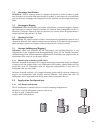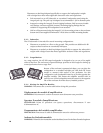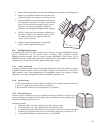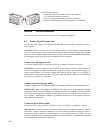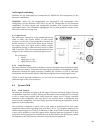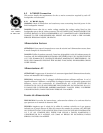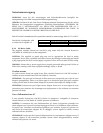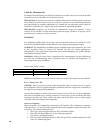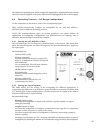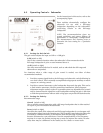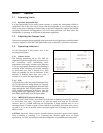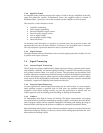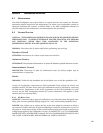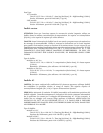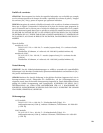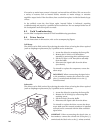
If it is desired to completely power off (de-energize) the loudspeaker, a conveniently located ac mains
disconnect must be supplied or the power cable must be unplugged from the ac mains supply.
6.4 Operating Controls - Full Range Loudspeakers
For the instructions in this section, refer to the accompanying Figure.
These switches electronically configure the loudspeaker for use with and without a
subwoofer and for different mounting positions.
NOTE: The recommendations given are general guidelines and cannot address all
applications or loudspeaker configurations. Use measurements and listening tests to
determine the best setting for a particular situation.
6.4.1 Setting the HPF (High Pass Filter)
The HPF switch sets the low frequency roll-off frequency or the system. This means that,
below the roll-off frequency, the lower the frequency the more the attenuation is applied to
the input signal.
Recommended Use:
55 Hz (switch to left):
Without Subwoofer:
Provides normal low frequency response for
music or a combination of music and speech.
With Subwoofer:
Not recommended. This will cause excessive
energy between 55 Hz and 110 Hz.
110 Hz (switch to right):
With Subwoofer:
Provides normal acoustic integration with a
subwoofer.
Without a Subwoofer:
Recommended for speech only; not
recommended for music.
6.4.2 Setting the Operating Mode
The Mode switch sets the voicing of the loudspeaker for different applications. It
compensates for differences in performance caused by different mounting conditions with
a LF shelving filter in the coupled position. The filter reduces the LF output in the range of
frequencies affected by 1/2 space loading.
Recommended Usage:
Normal (switch to left):
Use when the loudspeaker is aimed at the audience, typically stacked on stage or
stand/pole mounted.
Coupled (switch to right):
Use when the loudspeaker is coupled to a surface such as the stage floor as a performer
monitor or when mounted on a wall or the ceiling.
Use when arrayed with other NT loudspeakers to attenuate excess energy caused by
mutual coupling.
Use when room acoustics are "live", meaning with higher reverberation times, to improve
intelligibility by reducing the amount of LF reverberant energy excited by the loudspeaker.
17
1
2
3
1
2
3



